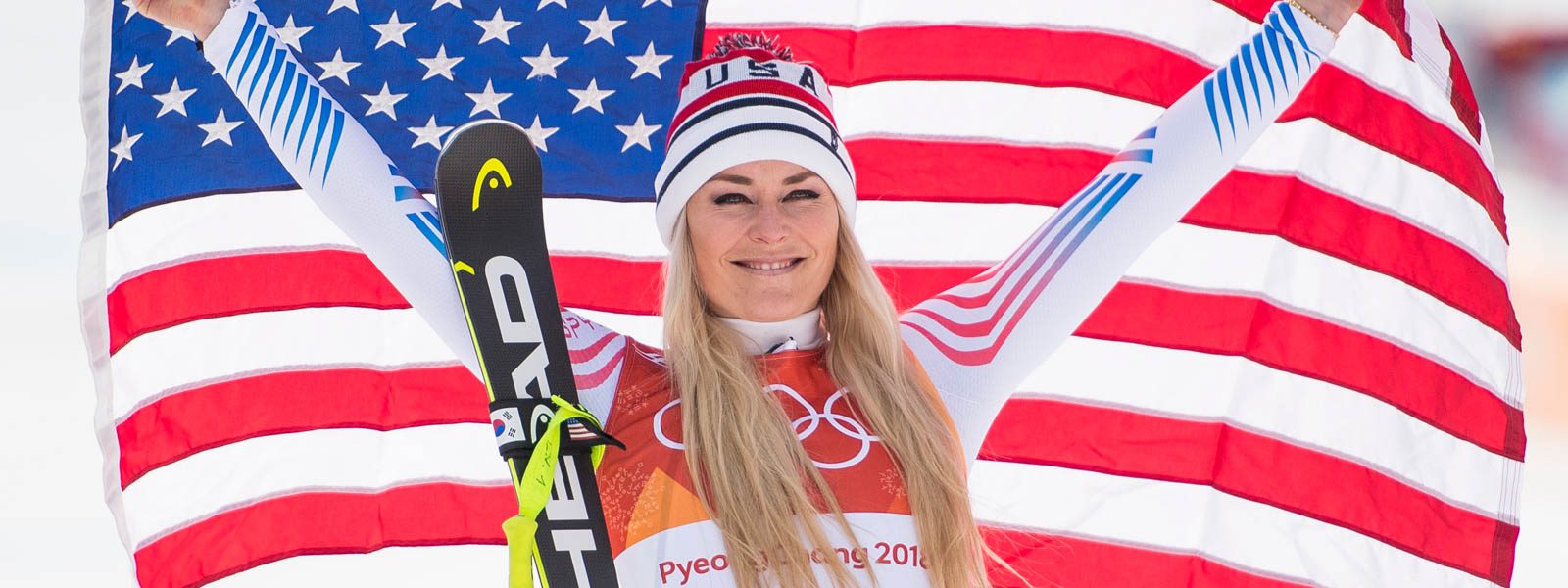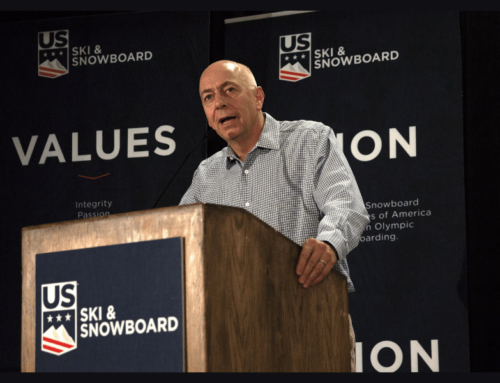Taylor: Innovate or die — constant evolution is key to American ski racing success
In addition to my work in the sports world, I have also consulted extensively in the corporate setting over the years. This work has focused on exploring ways to maximize both individual and organizational performance. Because I’m based in the San Francisco Bay Area, the heart of the tech world, a lot of my focus has been on helping companies in the technology sector to stay ahead of the breakneck pace of technological advancement and not go the way of corporate dinosaurs such as Kodak, Blockbuster, and Blackberry.
These experiences have also informed me in my efforts in the ski racing world, offering me insights into how the lessons I’ve learned in Big Business and Big Tech can be applied to drive change in our wonderful sport.
I believe that the conversation begun by Dan Leever and Ski Racing Media will ultimately lead to some revelatory conclusions and a decisive and out-of-the-box action plan to drive ski racing in the U.S. forward toward its mission of “Best in the World.” The challenge, as with any sector with deep roots, an entrenched culture, and long-standing ways of functioning, is how to exert sufficient force that will knock it out of its inertia that has propelled it along one certain path for a long time and onto a better course that will lead it to the “promised land” (in this case, the top of the Nations’ Cup).
With all that said, I have three favorite sayings when it comes to being the best ski racer or the best ski-racing country it can be. First, “If you want to ski like everyone else, be like everyone else.” In other words, if you want to be a decent ski racer among many, do what they do. And if you want to be a good ski-racing nation among many, do what the other countries are doing.
If you look at the best organizations in every sector, whether sports, technology, education, manufacturing, the list goes on, they are not following the so-called “best practices” of their industry; rather, they are identifying and implementing the truly best practices for their unique organization in the sector in which they operate within the market they serve. A brief aside. I’ve never been a fan of the idea of “best practices.” Sure, there are some basic things that must be done in any area that will allow for a minimal level of effectiveness. At the same time, I see “best practices” as a proxy for “doing what everyone else is doing,” which refers back to my “ski like everyone else, be like everyone else” saying. In sum, best practices will never allow U.S. ski racing to fulfill its mission.
Second, an old Texas adage says, “If you all you ever do is all you’ve ever done, then all you’ll ever get is all you’ve ever got.” In other words, if you keep doing the same things that you’ve always done, you can expect that you will stay on pretty much the same trajectory, and get the same results, as you always have. This adage affirms Einstein’s Law of Insanity: Doing the same thing over and over and expecting different results.
If U.S. ski racing wants different results, it must do something different than it has in the past. Now, I’m not saying that ski racing in America hasn’t changed over the years. There have been a lot of smart and passionate people who have been looking for the “secret sauce” that will produce the next superstars in our sport for decades. But I believe that there is no secret to raising superstars. Or rather, the secret is to just find them and leave them alone. Superstars will be superstars no matter what LTAD system they are in. The real secret is how to create organizational success, meaning how to develop large numbers of athletes who can compete at the top. Our efforts to evolve over the years have been more tribal and fragmented than collaborative and unified up and down the developmental food chain. “It takes a village” is incredibly relevant in achieving our shared goals.
What makes this issue so challenging is that ski racing is a highly complex sport in which there are many contributors to both individual athletic development, organizational success, and national dominance:
- Physical conditioning
- Technique and tactics
- Equipment
- Nutrition
- Sleep
- Injury (prevention and treatment)
- Recovery
- Psychology
- Relationships
- Teamwork
- Life
For U.S. ski racing to fulfill its promise, every one of these areas must be put under a microscope, dissected, challenged, and reconceived, based on the latest scientific research and the best expert knowledge. In a sport where races are won and lost by hundredths of a second, the smallest changes in any of the above areas can have an immense difference on the scoreboard. At the end of every race season, I ask the athletes I work with what they need to do different next season to get stronger, better, and faster. That is the same question that U.S ski racing should be asking as well.
There is no instruction manual on how racers can be the fastest they can be. Nor is there a manual on how organizations or nations can perform their best (though many in U.S. ski racing think that the Norwegians have such a manual; not true). Sure, you can identify best practices and use them. For example, the chances are that if Mikaela, as an individual athlete, or Norway, as a country, are doing something in their training, it probably has value. At the same time, what works for Mikaela or Norway won’t necessarily work for all U.S.S.T. athletes or for our country as a whole. Interestingly, I recently spoke to the High Performance Director of a national team from another country and he told me that, for everything they do with their conditioning, there is no real evidence that any of it makes a difference once their athletes get on snow).
These ideas apply not only to individual ski racers, but also to junior programs and U.S. Ski & Snowboard. Does Burke do things that differently than, say, Stratton? Does Vail prepare athletes in ways that different compared to, say, Rowmark? Does Norway or Italy develop their athletes noticeably differently than the U.S.? Though there are certainly variations across programs, for the most part, I would say that they are doing pretty much the same things. But, as another saying goes (not my third favorite), “If you’re always following the pack, the view stays the same.”
Now we arrive at my third favorite saying, this one from Peter Drucker, the well-known business guru: “Innovate or die.” This adage is the antidote to my first two quotes; it ensures that U.S. ski racing constantly looks for new ways of getting better.
Innovating is important in one of three situations in which U.S. ski racing has found itself in previous generations and in the present. First, we may have hit a plateau in which we aren’t seeing an upward trajectory in the success of our athletes organizationally (meaning our success isn’t based on having a few superstars stack the Nations’ Cup standings). Clearly, if our sport in America has gotten stuck in its development and continues to do what we have always done, we will only stay stuck (remember Einstein’s Law of Insanity).
Second, we may see a decline in our trajectory in which America’s results have been going backwards. Not only are we not improving, but are we actually getting worse? It seems self-evident that if we keep doing what we did in past seasons, next season will likely look about the same.
Third, if we have a great run of many successful athletes (again, what I can organizational success), with big improvements in our world standing. In this scenario, the natural tendency is to think that if it worked last year, let’s keep doing it. This could be a mistake. Yes, U.S. ski racing wants to continue to do things that are obviously beneficial, but that only leads in time to complacency and stagnation.
In all three cases, U.S. ski racing must innovate to initiate and continue the upward trajectory of its development of its ski racers and its programs. In the first two situations, to get back on that upward arc and, in the last situation, to keep on it.
Why do I believe that innovation is so important? Quite simply, leaders in every industry understand that if they aren’t continually innovating, their companies will die. And that’s not a way we want to go in U.S. ski racing. This spirit—innovate or die!—needs to be embraced at every level of our sport in America to not only survive, but to thrive and continue to develop.
How to innovate
It’s easy to say that U.S. ski racing wants to innovate in our LTAD. It’s an entirely different thing to actually find and use new ways of doing things. Here are a few ways I would recommend to foster innovation in our sport in the America.
First, see what the top ski-racing nations are doing that is innovative. Through existing collaborative relationships and by leveraging technology, for example, with social media and YouTube videos, we can access what the best in the world are doing in their LTAD. Though we may not be innovating directly, applying their methods to our LTAD system is innovative because we weren’t doing it in the past.
Second, another great way to innovate involves experimenting, in other words, try new things that may or may not work. The reality is that most innovation develops not through some prescribed and structured process of discovery, but rather just by playing around and seeing what works. There are tremendous opportunities for innovation simply by getting athletes, coaches, and other experts together and trying new things.
Third, see what the top nations aren’t doing and do that. Finding innovation in our sport is a real challenge because, as I noted above, everyone does the basics, such as conditioning, equipment, and technique, pretty darned well. But there are still opportunities for innovation. For example, though I am clearly biased here, one area in which U.S. ski racing can innovate in its LTAD is by developing a comprehensive mental training program.
Fourth, see what others outside of our sport are doing. There are many lessons that can be learned from what is being done with LTAD in other sports (read Finn Gundersen’s last article). We can also look beyond sport, into other industries and sectors for new ideas that we could apply to ski racing. For example, what is the military doing to prepare its elite soldiers? What is medicine doing to train the next generation of surgeons?
Lastly, one of the most important recommendations I can make is for all of us in the U.S. ski racing community to work together to identify the challenges and seek out solutions. One thing that has become very clear in the study of innovation is that groups of smart and agile thinkers with diverse backgrounds and experiences produce the most new ideas. Perhaps U.S. Ski & Snowboard could organize an Innovation Summit in which the best minds within and outside of our sport come together to identify key areas of innovation. From the summit could come the creation of focused committees with the specific charge of developing innovative approaches to their respective areas.
In sum, as U.S. ski racing continues to look for answers to our decidedly first-world problems, let’s take what worked in the past and continue to use it. At the same time, let’s also collaboratively and proactively seek out innovations that will drive the LTAD of American ski racers forward toward our stated goal of “Best in the World.





















